Introduction to Dopamine-Aware Leadership
Dopamine-aware leadership is an emerging cornerstone in organizational neuroscience, providing a scientific framework for driving lasting team motivation, energy, and engagement. Rooted in the biology of reward, anticipation, and optimism, this approach enables leaders to activate dopamine pathways in themselves and their employees intentionally—transforming work environments into dynamic spaces primed for growth and achievement.
At its heart, dopamine-aware leadership is not just about inspiration; it’s about understanding the fundamental neurochemical forces that shape attention, focus, and the pursuit of goals. Neuroscientists have shown that dopamine is released when individuals anticipate success, mark small milestones, and receive meaningful recognition for effort and persistence. By aligning leadership strategies with the brain’s reward and feedback systems, organizations report measurable increases in team motivation, engagement, productivity, and resilience.
The science of dopamine-aware leadership is supported by research from leading institutions worldwide. Dr. Okihide Hikosaka’s work at the National Institutes of Health confirms that the anticipation of progress, rather than just receiving rewards, triggers ongoing motivation in the brain. Similarly, studies at Vanderbilt University and University College London reveal that dopamine production in regions such as the striatum and prefrontal cortex increases the willingness to expend effort and drives future-oriented thinking.
Today’s organizations, from high-tech startups to Fortune 500 companies, are integrating dopamine-aware leadership into their executive development programs, training managers in the power of neurochemistry and data-driven feedback. By leveraging recognition practices, clear milestone setting, and vision-based leadership, businesses create cultures where dopamine is intentionally harnessed to fuel employee satisfaction, innovation, and peak performance.
In short, dopamine-aware leadership bridges the gap between the art of inspiring teams and the science of optimizing brain reward systems. It allows leaders to design their environments, communication, and daily rituals for maximum motivation and sustainable achievement—anchoring topical authority squarely within the core of neuroscience and leadership in 2025.
Dopamine, Motivation, and Workplace Engagement

Dopamine-aware leadership fundamentally transforms how motivation and engagement are cultivated in modern teams. The neuroscience is clear: dopamine is less about pleasure and much more about anticipation; the brain itself is wired to reward progress, optimism, and meaningful effort rather than simply final achievements. Dopamine surges when employees anticipate success, reach meaningful milestones, and receive focused recognition. As a direct result, leaders can engineer environments that consistently fuel the drive to achieve goals, innovate, and sustain focus.
The reward pathway at the core of dopamine-aware leadership involves several key brain areas: the ventral tegmental area initiates motivation; the nucleus accumbens reinforces positive outcomes; and the prefrontal cortex enables high-level planning and sustained effort. When leaders set ambitious yet achievable goals and break them into manageable steps, every milestone releases dopamine. For example, moving a project forward with small, clear wins is far more motivating than waiting for a single breakthrough. Each “micro-success” creates a neurochemical boost—a ripple of renewed energy across the team.
Recognition and feedback are equally essential. Neuroscience demonstrates that effort-focused feedback (such as specific praise for persistence or innovation) reliably maintains engagement. Leaders skilled in dopamine-aware leadership ensure their feedback is frequent, detailed, and acknowledges genuine contributions, promoting long-term team resilience and effectiveness. When this recognition is visible and tied to an ongoing purpose, dopamine-aware leadership rapidly becomes a competitive advantage, not just a motivational tactic.
However, the pitfalls of ignoring these brain mechanics are substantial; overemphasizing monetary incentives leads to rapid motivational burnout, while vague goals and a lack of feedback foster lethargy and disengagement. Dopamine-aware leadership, therefore, rests on a clear understanding that daily interactions, specific goal-setting, and recognition rituals drive the sustained engagement every leader seeks.
Dopamine Rituals and Routines for Sustainable Team Engagement

Dopamine-aware leadership requires moving beyond occasional motivation tactics; it means embedding dopamine-optimizing rituals and routines into your team’s daily operations. The most successful organizations design work environments where the anticipation of achievement, recognition, and continuous growth becomes a habitual dopamine trigger, sustaining drive even in complex or high-pressure settings. Neuroscience shows that rituals—structured, repeatable actions—help regulate the brain’s reward responses, providing resilience against setbacks and amplifying motivation over time.
First, goal-setting rituals should be SMART (Specific, Measurable, Achievable, Relevant, Time-bound), providing stepwise clarity that taps directly into dopamine pathways. Teams thrive when they see regular progress bars, virtual leaderboards, or task tracking—each small advancement creates a positive reward loop that fuels additional effort. Leaders should gamify team progress wherever possible, breaking major projects into more miniature stages and honoring mini-wins as much as final victories. In practice, daily or weekly meetings should include a moment to highlight these micro-achievements and share gratitude, which has been proven to boost dopamine and reinforce team cohesion.
Recognition routines are equally vital. Instant feedback—whether a congratulatory Slack message, an on-the-spot thank-you, or a quick shout-out in a team huddle—should be systematized, not left to chance. By creating reliable signals of appreciation, dopamine-aware leadership ensures employees know their contributions matter and that effort and persistence are valued across projects and roles. This routine reinforces positive behaviors, fosters initiative, and builds psychological safety—a foundation for ongoing innovation.
Physical, social, and gamification rituals also drive dopamine engagement. Encouraging movement (like “walk-and-talk” meetings or friendly step challenges), adding play elements (competition, scored challenges, rewards), and fostering positive social connections all stimulate dopamine release and maintain team stamina. When paired with structured opportunities for professional development—workshops, mentorships, learning sessions—dopamine-aware leadership establishes a growth culture where brain chemistry itself is optimized for performance.
These neuroscience-backed rituals are not expensive or difficult to implement. What matters most is regularity and intention. Leaders should commit to making dopamine-triggering routines central to their culture, ensuring everyone experiences the motivating power of progress, recognition, and meaningful belonging every day.
Real-World Impact—Case Studies and Practical Applications
Dopamine-aware leadership is not simply a theoretical model; real-world applications and demonstrable results across diverse organizations back it. In team environments, dopamine-based strategies have been shown to reshape morale, motivation, and innovation by emphasizing recognition, structured achievement, and adaptive feedback systems.
For example, a tech startup struggling with product delays used dopamine-aware leadership by breaking large objectives into smaller, reward-oriented milestones. Each incremental accomplishment triggered a motivational boost—measured by team engagement and performance—ultimately helping the company not only meet revised deadlines but also rebuild a culture of optimism and shared achievement.
Large corporations are also leveraging neuroscience to transform leadership. IBM’s neuroscience leadership training increased employee satisfaction and performance by teaching managers to deliver feedback consistently and empathetically. Coca-Cola implemented recognition rituals that fostered team collaboration and creativity, while Unilever built trust and reduced turnover by embracing emotional awareness—each company demonstrated measurable business outcomes from integrating dopamine-based strategies.
Neuroscience-based programs at HP, Splunk, and Fortune 500 tech firms apply brain-science principles to growth mindset, bias reduction, and inclusivity, with tens of thousands of leaders reporting improved inclusiveness and behavior change after their training. These leadership case studies emphasize the power of dopamine-aware interventions in sustaining engagement, especially when accompanied by structured goal-setting, timely feedback, and clear rituals—proving that harnessing neurochemistry isn’t just innovative, but increasingly essential for employee retention and growth.
On an individual level, successful managers continuously refine their approach by understanding each team member’s unique dopamine triggers. Some employees thrive when praised for creative solutions, while others thrive when praised for resilience or teamwork. Leaders committed to dopamine-aware practices regularly observe, gather feedback, and adjust their motivational tactics for greater impact. This granular attention, backed by neuroscience, helps leaders balance high challenge with periods of recovery, avoiding dopamine burnout and sustaining long-term productivity.
Effective implementation of dopamine-aware practices includes:
- Tailoring goal achievement milestones to individual preferences
- Consistent and meaningful recognition
- Encouraging professional development and social connection
- Fostering autonomy and creativity while balancing challenge and rest
The collective results are precise: organizations that embrace dopamine-aware leadership create teams that are more motivated, resilient, and adaptable to change. This approach positions modern leaders at the cutting edge, with neuroscience providing both a practical toolkit and a foundation for topical authority in high-performance leadership.
Challenges, Limitations, and Avoiding Dopamine Traps in Leadership

While dopamine-aware leadership brings significant advantages, leaders must also recognize its limitations and potential pitfalls. One key challenge is dopamine “overstimulation”. When teams are constantly chasing high-stakes rewards or the next motivational “hit,” they risk burnout, demotivation, and even health problems. Dopamine release follows a peak-and-crash cycle; if the baseline is artificially raised through excessive incentives or unbalanced pressure, motivation plummets—leading to fatigue, decreased productivity, and mood swings.
The “Dopamine Trap” describes another hazard: when leaders conflate busyness with genuine progress. High-activity environments (busy meetings, dashboards, constant check-ins) may feel productive, as dopamine rewards mere motion rather than true momentum. This creates a motivation loop that values starting new projects over seeing existing ones through to completion. Teams can get addicted to visible activity, sacrificing deeper, more impactful work in favor of “dopamine-driven” but ultimately shallow wins. Authentic leadership means building momentum—through consistency, strategic planning, and patience—rather than chasing immediate gratification.
Recognition programs themselves may also falter if they lack immediacy, specificity, or personal relevance. Research suggests that only tailored and timely feedback reliably triggers dopamine and drives sustainable engagement. Generic or repetitive rewards lose motivational potency over time, requiring leaders to diversify recognition tactics and adapt to individual preferences.
Finding the right balance is crucial. Leaders should:
- Avoid excessive short-term incentives; calibrate goals for achievable, meaningful progress
- Foster challenge and innovation while monitoring signs of stress or burnout
- Emphasize morale-boosting behaviors —such as cooperation, information sharing, and psychological safety — before pushing for performance.
- Reward behaviors that build momentum, not just activity
- Periodically review recognition approaches for novelty and relevance
Dopamine-aware leadership must be holistic. Include serotonin, oxytocin, and endorphins—other neurochemicals tied to trust, collaboration, and meaning—within your strategy for balanced, long-term performance. Leaders should also be aware that dopamine-based practices work best in environments with visible goals, regular feedback, and stable progress. In chaotic or highly unpredictable contexts, dopamine-driven systems can be less effective and may need support through other leadership strategies.
By understanding and avoiding these traps, modern leaders can harness the power of dopamine as a healthy ally—creating cultures of achievement while safeguarding against the risks of neurochemical imbalance or addiction to instant gratification.
The Future of Dopamine-Aware Leadership—Trends for 2025 and Beyond
Leadership in 2025 is defined by a significant shift: from chasing fleeting dopamine surges to building cultures of sustainable motivation, psychological safety, and “quiet strength”. As organizations adapt to AI, rapid innovation, and shorter attention spans, neuroscience continues to steer leadership trends. Dopamine-aware leadership is increasingly about balancing ambition with emotional intelligence, resilience, and long-term well-being —rather than quick wins or constant novelty.
Microwork cultures, as highlighted by recent research, have become especially powerful. By breaking tasks into ultra-small units, leaders fuel ongoing dopamine release with frequent achievements, reducing burnout and boosting morale across the day. Modern managers are architects of productivity systems, ensuring each milestone—no matter how minor—adds to the overall momentum. This approach counters the trap of overstimulation by celebrating small, meaningful accomplishments while keeping stress to a minimum.
The dopamine dilemma remains central: in an age of instant gratification and digital reward cycles, leaders must consciously foster delayed gratification, patience, and strategic decision-making. Forward-thinking organizations encourage teams to pursue long-term goals and prioritize thinking ahead, which builds not only resilience but also innovation capacity. Leaders now move from reward providers to “motivational architects,” orchestrating environments that foster sustainable achievement rather than unsustainable overdrive.
New priorities emphasize holistic well-being, flexible work structures, mental health, and the integration of ethics with motivation. The impact of digital platforms, algorithms, and generative content means dopamine is now not just a brain molecule—but a business model. Leaders who understand its power and limitations will define company culture for years to come, making neuroscience literacy a non-negotiable part of executive skillsets.
In summary, dopamine-aware leadership for 2025 and beyond is less about the loudest voice or most visible action—it is the calm, intentional cultivation of environments where ambition, emotional stability, and human connection are optimized for sustained, purpose-driven achievement.
Innovative Approaches and Tools in Dopamine-Aware Leadership
Modern dopamine-aware leadership is being advanced by pioneering organizations leveraging neuroscience to enhance executive capabilities, shape culture transformation, and drive inclusiveness at scale. Leading tech companies such as HP and Splunk, as well as Fortune 500s, have embedded brain-based principles into leadership programs, nurturing growth mindsets, reducing bias, and building more inclusive, resilient teams.
- HP Inc. partnered with the NeuroLeadership Institute to foster a growth mindset among thousands, demonstrating how targeted neuroplasticity exercises can trigger lasting culture change.
- Splunk tackled bias reduction through neuroscience-backed inclusivity initiatives, reaching 3,500 participants and prompting regular bias mitigation behaviors.
- A major Fortune 500 tech firm introduced neuroleadership for 80,000 employees, integrating diversity and inclusion training with evidence-based behavior change, significantly boosting retention and engagement.
Programmatic innovations include:
- Virtual reality (VR) simulations: Designed on neuroscience principles to enhance empathy and emotional intelligence, VR immerses leaders in complex social scenarios, sharpening perspective and relational skills.
- Neurofeedback tools: By visualizing and modulating neurological responses, leaders master emotional regulation, build composure under pressure, and improve team dynamics.
- Cognitive-behavioral coaching: Neuroscience-driven coaching helps leaders recognize and reframe unhelpful thinking patterns, enabling healthier decision-making, greater emotional resilience, and more effective motivation.
These approaches are not theoretical—statistics reveal up to 30% stress reduction and notable improvements in decision efficiency, satisfaction, and inclusiveness as a direct result of deploying mindfulness, biofeedback, and neuroplasticity exercises.
Case studies show leaders experiencing less overwhelm, greater clarity, and sustained engagement after regular use of such tools. Programs focused on physical intelligence (the integrated flow of neurochemicals like dopamine, oxytocin, serotonin, and DHEA) now support agility, creativity, and resilience in volatile work environments, bridging brain science and tactical leadership.
Ultimately, neuroscience-led development enables leaders to optimize their dopamine responses, nurture individual and team strengths, and cement a future-ready performance culture. These investments not only increase ROI—they solidify organizations as industry authorities in high-impact, science-driven leadership.
Neuroscience-Inspired Goal Setting and Continuous Improvement

Dopamine-aware leadership thrives through nuanced goal setting and perpetual learning, rooted in the latest neuroscience research. Studies confirm that clear, achievable goals directly activate dopamine pathways, providing motivation and focus, and reinforcing reward cycles with every milestone. Leaders who use incremental, manageable targets for themselves and their teams foster ongoing engagement and satisfaction.
Neuroplasticity—the brain’s capacity to reorganize itself through new experiences—means that setting and pursuing goals builds not only new skills, but also new neural connections for future effort and resilience. Organizations leading in dopamine-aware practices embed explicit progress tracking (using dashboards, leaderboards, or visual diagrams) to make results visible and tangible. Each small win is celebrated, reinforcing a cycle of positive momentum and regular dopamine surges.
Recognition should be frequent, specific, and personalized. Neuroscience teaches that even micro-recognitions—such as an instant message, a compliment, or a quick shout-out in meetings—trigger the brain’s reward system, boosting team cohesion and individual satisfaction. For advanced teams, tools such as cognitive-behavioral coaching, mindfulness, and biofeedback bolster emotional regulation, stress management, and optimized decision-making, delivering measurable improvements in focus and clarity.
Leaders committed to dopamine-aware practices invest in continuous learning—through professional development, mentorship, or neuroscience-based workshops. Over time, these investments compound, creating cultures of adaptability, creativity, and lasting performance.
This ongoing approach ensures dopamine-aware leadership is not just a toolkit, but a mindset—enabling organizations and executives to thrive in complex, dynamic environments while securing lasting topical authority in neuroscience-led professional development.
#dopamineawareleadership #neuroscience #brainbasedleadership #executivemotivation #neuroleadership #leadershipdevelopment #mentalhealth #brainhealth #teamengagement #motivatedteams #growthmindset #neurodiversity #scienceofmotivation #cognitiveperformance #leadershiptrends2025 #businessneuroscience #mindsetmatters #psychology #dopamineoptimization #wellnessatwork #focusandflow #resilientteams #rewardpathway #inclusivityatwork #dopamine





